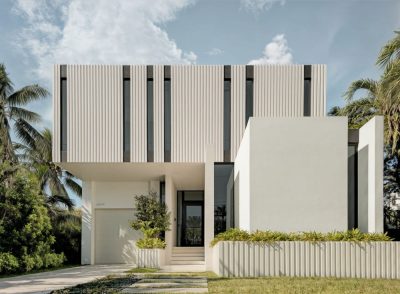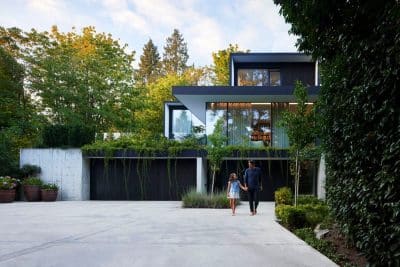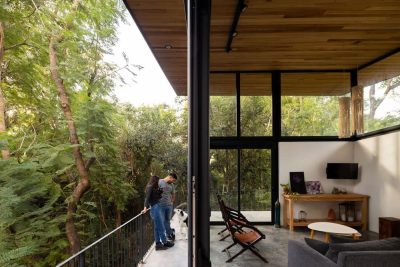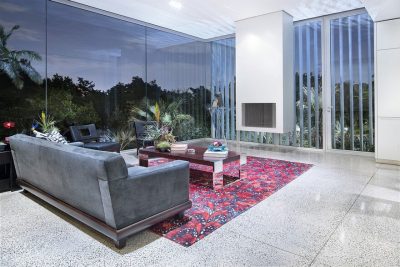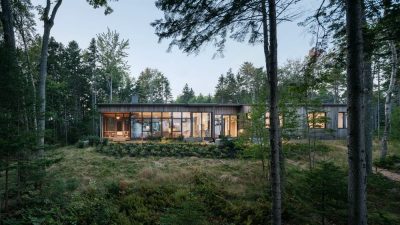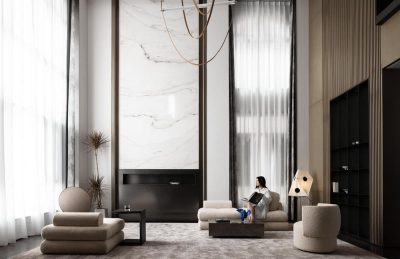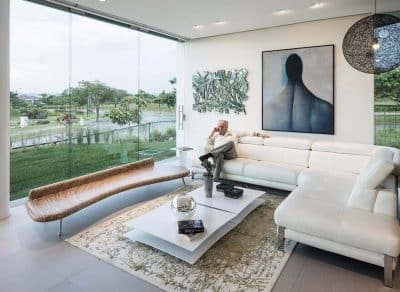Project: Mirador House
Architects: RAMA estudio
Lead Architects: Carolina Rodas, Felipe Donoso, Carla Chávez
Design Team: Felipe Donoso, Carolina Rodas, Carla Chávez, Jefferson Camacho, Ma. Fernanda Ayala, Daniel Merchán
Structural Engineer: Ing. Pedro Ospina Larrea
Builder: RAMA estudio
Location: Ecuador
Area: 190 m2
Year: 2021
Photo Credits: Jag Studio
In 2020, during the global Covid-19 pandemic, many families re-evaluated their way of living. The owners of this house maintained a “nomadic” lifestyle so their stays in Ecuador were short and sporadic. The space they inhabited during these visits was a small 65m2 suite, in which they had a room with a full bathroom and a multifunctional space that included a “bedroom” for their two daughters. After the lockdown, the family decided that their stays should be longer and that space should better allow them to perform their daily activities.
The commission. The specific request was to expand their existing house for social areas, include comfortable and independent bedrooms for the daughters, and take advantage of the view of the site. As a special requirement, the work had to start immediately and had to be built in no more than three months.
The idea. “We thought about an industrially prefabricated piece that blends well with the environment and subtly sits on the ground, attaching itself to the existing construction.”
The natural environment is understood as an envelope of the building which is placed over the slope overlooking the valley. There is no soil disturbance nor vegetation degradation.
The new piece is manufactured and installed quickly while the intervention in the existing building is prompt and efficient. Once these processes are finished, all the furniture and paneling required for each space will be installed.
The project. A system of metal channels supported by two porticoes is proposed. These channels work as the structure for both the floor and the roof which is thermally insulated and allows for vegetation to grow. This structure requires a minimal foundation, which allows almost no soil disturbance and very little time for its manufacturing and assembly.
The three openings of this structure are covered with tempered glass. Floor and ceiling elements frame the view and allow the nature of the environment to surround the space. The existing vegetation generates enough privacy to maintain transparency around the entire perimeter.
At the same time, the walls of the front façade of the existing construction are eliminated to create a space that links to the new construction. This space is a series of regular modules build with plywood panels that run from end to end to generate storage, decorative surfaces, as well as a permeable and semi-transparent screen towards the bedrooms. Five sliding panels of the same material are installed at the front of this furniture and can be placed anywhere according to the needs of the users.
A single piece of furniture is placed in the center of the new space. Towards the living room, this piece of furniture is a metal element that contains storage space and a module in which the stove and the television are embedded. Towards the dining room, this element contains the kitchen while the material changes to plywood paneling and stainless-steel surfaces.
The kitchen consists of one module, which contains all the appliances and cabinets, as well as an island that works as a countertop and a dinette. This central piece of furniture allows for fluid and continuous circulation throughout the space, and for all the installations to be centralized inside this piece.
Regarding the intervention in the existing construction, the bedrooms and bathrooms are configured by light paneling made of plywood and metal sheets. This paneling contains thermal acoustic insulation to improve comfort in bedrooms and bathrooms. Within these areas, there is placed a single piece of furniture that contains a desk, storage space, and a murphy bed to take advantage of the internal space of the bedrooms.
The Mirador house has an underfloor heating system in the social area and kitchen to maintain comfortable temperatures in the space without sacrificing the transparency of the facades.
The work was completed in three months and ready to be inhabited. No vegetation was damaged, and no material was wasted. All material that could be reused from the demolition of the façade was sorted for later usage and the rubble was used to improve the ground in areas surrounding the building. Doors and windows were also carefully stored. The Mirador house has a septic tank for wastewater, which makes it independent from the sewage system, and a stormwater system that improves the drainage of rainwater in the surroundings.
















